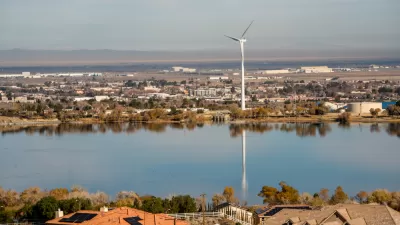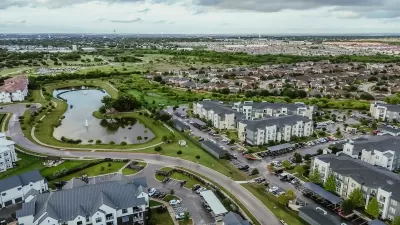The county of Los Angeles is looking for policy tools that will add affordable housing units to the housing market. Inclusionary zoning is its policy of choice.

"Housing developers seeking to build in many of Los Angeles County's unincorporated communities will soon be required to set aside units for low- and moderate-income renters," reports Steven Sharp.
With a few exceptions, the new ordinance requires rental housing projects with five or more baseline dwelling units (not including density bonus units) to include apartments for low- and extremely low-income households. "Developers will be offered three different set-aside options - ranging from 5 percent to 20 percent of the unit count - varying based on the affordability level and project site. Smaller-scale projects with 15 or fewer baseline units will be permitted to set aside fewer affordable units," according to Sharp.
The new ordinance also requires affordable units in for-sale projects: "Likewise, for-sale projects with five or more baseline dwelling units will be required to set aside homes for moderate- and middle-income households - a new category which roughly corresponds to 'workforce' housing."
Sharp's coverage of the new law includes more details on the where and how the law will be applied, and a process for evaluating the law's effectiveness in delivering the desired new affordable housing stock in unincorporated parts of L.A. County. Sharp also notes that the new inclusionary zoning ordinance furthers the county's work toward a suite of ordinances, requested by the Board of Supervisors in 2018, to spur production of affordable housing units in areas under its planning jurisdiction.
FULL STORY: L.A. County Supervisors Sign Off on Inclusionary Housing Policy

Study: Maui’s Plan to Convert Vacation Rentals to Long-Term Housing Could Cause Nearly $1 Billion Economic Loss
The plan would reduce visitor accommodation by 25,% resulting in 1,900 jobs lost.

North Texas Transit Leaders Tout Benefits of TOD for Growing Region
At a summit focused on transit-oriented development, policymakers discussed how North Texas’ expanded light rail system can serve as a tool for economic growth.

Using Old Oil and Gas Wells for Green Energy Storage
Penn State researchers have found that repurposing abandoned oil and gas wells for geothermal-assisted compressed-air energy storage can boost efficiency, reduce environmental risks, and support clean energy and job transitions.

Santa Barbara Could Build Housing on County Land
County supervisors moved forward a proposal to build workforce housing on two county-owned parcels.

San Mateo Formally Opposes Freeway Project
The city council will send a letter to Caltrans urging the agency to reconsider a plan to expand the 101 through the city of San Mateo.

A Bronx Community Fights to Have its Voice Heard
After organizing and giving input for decades, the community around the Kingsbridge Armory might actually see it redeveloped — and they want to continue to have a say in how it goes.
Urban Design for Planners 1: Software Tools
This six-course series explores essential urban design concepts using open source software and equips planners with the tools they need to participate fully in the urban design process.
Planning for Universal Design
Learn the tools for implementing Universal Design in planning regulations.
Ascent Environmental
Borough of Carlisle
Institute for Housing and Urban Development Studies (IHS)
City of Grandview
Harvard GSD Executive Education
Toledo-Lucas County Plan Commissions
Salt Lake City
NYU Wagner Graduate School of Public Service





























